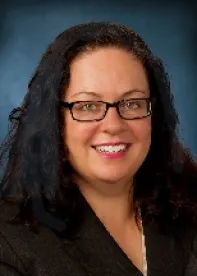In Chandler Dawson v. Chandler Dawson and Lyle Bowman, Appeal Nos. 2012-1214,-1215,-1216, -1217 (Fed. Cir. March 25, 2013) (a copy can be found at the end of this post), the Federal Circuit affirmed a Board of Patent Appeals and Interferences (BPAI) interference decision that Chandler Dawson was not the sole inventor of the inventions covered by U.S. Patent No. 6,239,113 (“the ‘113 patent”) and U.S. patent No. 6,569,443 (“the ‘443 patent”).
Chandler Dawson was an employee of UCSF in the summer of 1997 when he gave a presentation to the World Health Organization (WHO) about topical use of an antibiotic for treating eye infections. During the presentation and during subsequent presentations and discussions about the antibiotic, Dawson stated that he was having trouble formulating a delivery mechanism for the eye drug. After a delivery mechanism was created, without the assistance of Dawson, Dawson and another party, Dr. Lyle Bowman, filed patent applications assigned to InSite that later issued as the ‘113 patent and the ‘443 patent. UCSF then filed a patent application, essentially copying the ‘113 and ‘443 patent specification and claims and naming Dawson as the sole inventor, to provoke an interference proceeding. The issue in the interference proceedings came down to a determination of who conceived of the inventions, and when they conceived of the inventions.
The BPAI found that UCSF failed to prove sole conception by Dawson. The BPAI found that Dawson could not have solely conceived of the invention because Dawson did not “fully appreciate how [his] idea was to be implemented in actual practice.” The Board found it pertinent that Dawson admitted in several documents that he was struggling with creation of the treatment mechanism for the medication. The BPAI also found that Dawson merely “had a general idea for a future research plan” regarding the treatment at issue.
The court affirmed the BPAI on the issue of conception, citing Burroughs Wellcome Co. v. Barr Labs, Inc., 40 F.3d 1223, 1228 (Fed. Cir. 1994) for the holding that “[c]onception is complete only when the idea is so clearly defined in the inventor’s mind that only ordinary skill would be necessary to reduce the invention to practice, without extensive research or experimentation,” and that “[a]n idea is definite and permanent when the inventor has a specific, settled idea, a particular solution to the problem at hand, not just a general goal or research plan he hopes to pursue.” The court pointed to the difficulties Dawson was having with developing a topical application for treatment. The court also found it significant that the WHO recommended that Dawson perform additional work on the topical treatment and report back in the future.
The court further discussed communications by another party, Dr. Kenneth Chern, that summarized and described for Dawson various articles and experimental studies concerning medicine concentrations of ointments. According to the court, this signified that Dawson did not know what concentration to use for the treatment ointment disclosed in the ‘113 and ‘413 patents, and the court found that Dawson’s plan to develop a product that was “like” another product was not a “specific, settled idea [or] a particular solution” for his invention. Burroughs, 40 F.3d at 1228.
UCSF argued that the BPAI improperly required a showing of reduction of practice to prove conception. According to UCSF, an inventor does not need to know that his invention works to conceive of the invention. However, the court cited Hybritech Inc. v. Monoclonal Antibodies, Inc., 802 F.2d 1367, 1376 (Fed. Cir. 1986) for the holding that, quite apart from reduction to practice, conception requires that the inventor know how his “definite and permanent idea of the complete and operative in invention…is hereafter to be applied in practice.” The court found that while UCSF was correct that an inventor does not need to know that his invention will work in order for conception to be complete, an inventor still must still conceive of a way to make an idea operative, and Dawson failed to do so in this case.
In his dissent, Judge Reyna found that Dawson possessed a definite and permanent idea of his complete and operative invention when he gave the initial presentation to the WHO in 1997 because, at that presentation, Dawson discussed the problem of delivery of medicine to the eye and Dawson presented a list of vehicles for administering drugs to the eye. Reyna also found that, to demonstrate conception, the law did not require Dawson to “develop a working physical embodiment of his innovative idea.” Dissent at p. 6. Reyna therefore found that Dawson, while employed at UCSF rather than InSite, possessed a permanent and definite idea of his complete and operative invention. Therefore, according to Reyna, UCSF should have prevailed in the interference proceeding.



 />i
/>i
